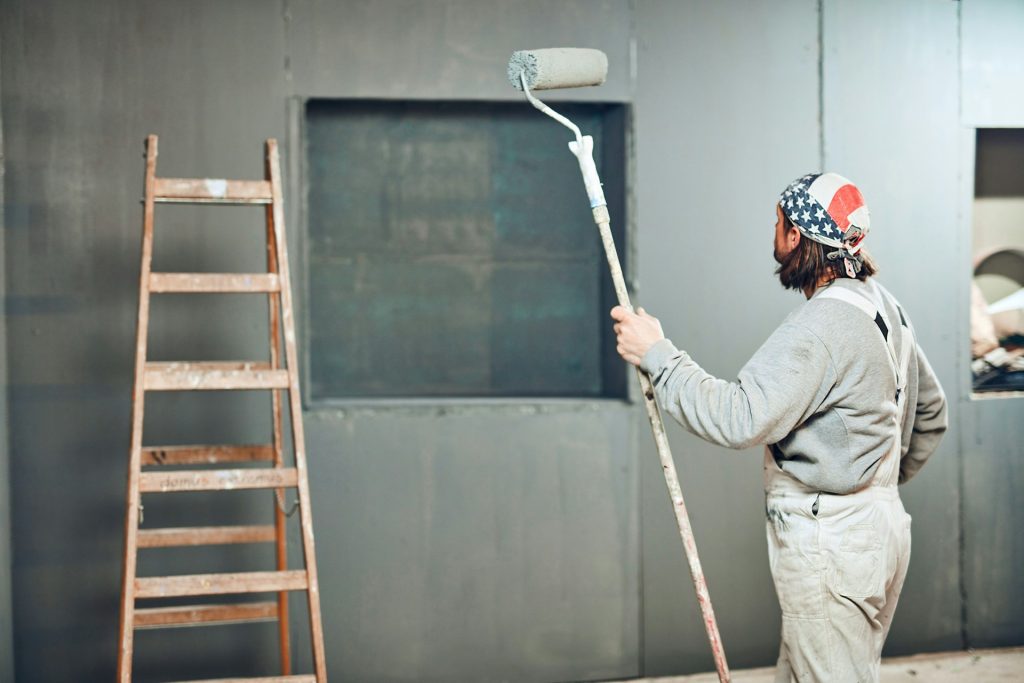Winter can be tough on commercial properties. Cold temperatures, rain, and wind can all take a toll on building exteriors. To keep your commercial property in great shape, it's important to winter-proof it properly. One of the best ways to do this is by using the right exterior paint. The right paint can protect your property from harsh weather and keep it looking sharp through the colder months.
Choosing a weather-resistant paint is just the beginning. Proper preparation of the surface is vital to ensuring the paint adheres well and provides lasting protection. Without thorough preparation, even the best paint won't be effective. Clean surfaces, repaired damage, and a good primer can make all the difference.
Once the surface is ready, applying the paint correctly ensures that it does its job well. Techniques for application play a big role in preventing damage from rain and cold. Finally, maintaining the painted surface throughout winter and beyond is key to long-term protection. Regular inspections and touch-ups help keep the protective barrier intact.
By understanding each of these steps, you can effectively winter-proof your commercial property with the right exterior paint. This will help maintain its appearance and structural integrity, saving you time and money in the long run.
Choosing Weather-Resistant Paint
Choosing the right paint for winter-proofing your commercial property is crucial. Weather-resistant paints are specially formulated to withstand harsh conditions. They provide a strong barrier against rain, cold, and wind, helping to prevent damage and maintain the building's appearance.
Look for paints that are specifically labelled as weather-resistant or suitable for exterior use. Acrylic latex paints are a popular choice for exterior painting. They offer excellent durability and flexibility, expanding and contracting with temperature changes without cracking. Additionally, these paints are resistant to fading, which keeps your property looking vibrant longer.
Another important factor is selecting paint with added features such as UV protection and water resistance. UV protection helps to guard against sun damage, while water resistance prevents moisture from seeping in and causing rot or mould. These features are particularly important for commercial properties that are exposed to the elements year-round.
It's also wise to consider eco-friendly options. Low-VOC (volatile organic compounds) paints are better for the environment and the health of those who work in or visit the building. They offer the same durability and protection as traditional paints without the harmful emissions. This makes them a smart choice for businesses aiming for sustainability.
Preparing the Surface for Winter Conditions
Before applying the paint, proper surface preparation is essential to ensure it adheres well and lasts through winter. Start by thoroughly cleaning the surface. Dirt, dust, and old paint residues can prevent new paint from sticking properly. Use a pressure washer or a stiff brush with soap and water to remove any contaminants. Let the surface dry completely before moving on to the next steps.
Inspect the building for any damage, such as cracks, holes, or rotting wood. Repair these issues before painting. Fill cracks and holes with caulk or an appropriate filler, then sand the surface smooth. Replacing any rotten or severely damaged materials ensures that the paint job will be durable and effective.
Next, it's important to sand any glossy surfaces to create a rough texture. This helps the paint adhere better and provides a more even finish. Use medium-grit sandpaper to scuff up the surface lightly.
Applying a primer is the final step in preparation. Primers help paint bond better to the surface and provide an even base for the topcoat. They also block stains and prevent them from bleeding through. Choose a primer that is suited to the material of your building and apply it evenly. Allow it to dry fully before proceeding with the topcoat. Proper preparation sets the foundation for a long-lasting and protective paint job.
Applying Paint for Maximum Protection
Applying exterior paint correctly is essential for maximum protection against winter conditions. The first step is to choose the right tools. High-quality brushes and rollers ensure even coverage and a smooth finish. A roller with a thick nap works well for rough or textured surfaces, while a brush is ideal for detailed areas and edges.
Begin by applying a thick, even coat of paint. Take your time to ensure full coverage without drips or thin spots. Use the brush for corners and intricate details and the roller for larger areas. Work in manageable sections to maintain a wet edge and avoid lap marks, which can occur if the paint begins to dry before the neighbouring section is painted.
Another important tip is to apply multiple coats. With exterior painting, one coat is seldom enough for adequate protection. Apply at least two coats, allowing sufficient drying time between each. This ensures the paint forms a robust barrier against harsh weather conditions and extends the lifespan of the paint job.
When painting during cooler months, be mindful of drying times. Colder temperatures can slow down the drying process, so it's important to check the weather forecast and choose a period with dry, mild conditions. Avoid painting if rain or extreme cold is expected within 48 hours.
Long-Term Maintenance Tips for Winter-Proofing
Long-term maintenance is key to ensuring your painted surfaces continue to protect your commercial property through winter and beyond. Regular inspections prevent minor issues from becoming major problems. Check for peeling, cracking, or bubbling paint and address these issues as soon as you notice them.
Keep the exterior clean. Dirt and grime can build up on surfaces, which not only affects the appearance but can also lead to damage. Wash the exterior regularly with a mild detergent and water to keep it looking fresh and to prevent pollutants from weakening the paint.
Here are some practical maintenance tips:1
1. Touch-up Paint: Have a small quantity of the original paint on hand for touch-ups. Quickly fixing small areas can prevent larger sections from deteriorating.
2. Seal Gaps and Cracks: Inspect seals around windows, doors, and other openings. Reapply caulking as needed to keep moisture from penetrating the building.
3. Gutter Maintenance: Ensure that gutters and downspouts are clear of debris. Proper drainage helps prevent water damage to painted surfaces.
Finally, be proactive about making repairs to the building's structure as needed. Loose or damaged components, such as shingles or siding, can expose painted surfaces to more wear and tear, requiring more frequent maintenance.
Conclusion
Winter-proofing your commercial property with the right exterior paint involves choosing weather-resistant materials, preparing surfaces carefully, applying paint correctly, and maintaining the painted surfaces over time. Each of these steps plays a crucial role in ensuring the longevity and effectiveness of your paint job.
Proper winter-proofing not only protects your building from the harshest weather but also helps maintain its professional appearance. A well-maintained exterior speaks volumes about your business and can make a significant impression on clients and customers.
For expert advice and assistance with your commercial property's exterior painting needs, contact Nu-Vision Painting. Our experienced commercial exterior painters are ready to help you achieve a lasting, professional finish. Reach out to Nu-Vision Painting today to ensure your commercial property is ready to withstand the winter elements. 




